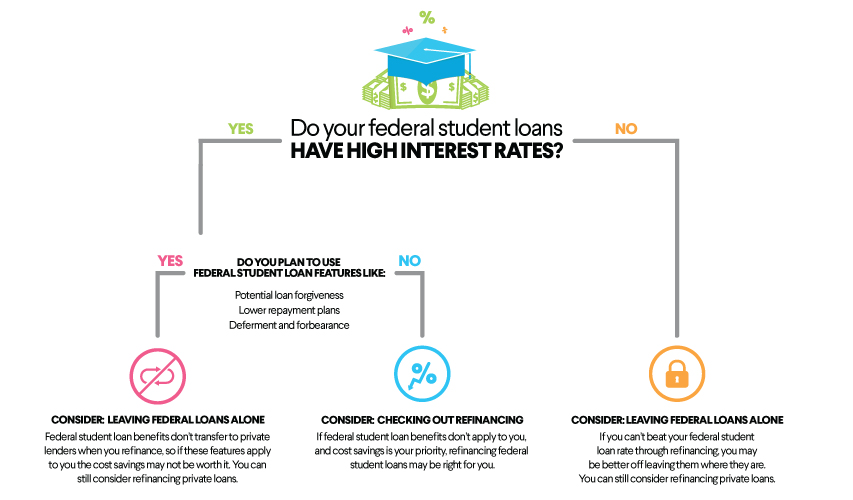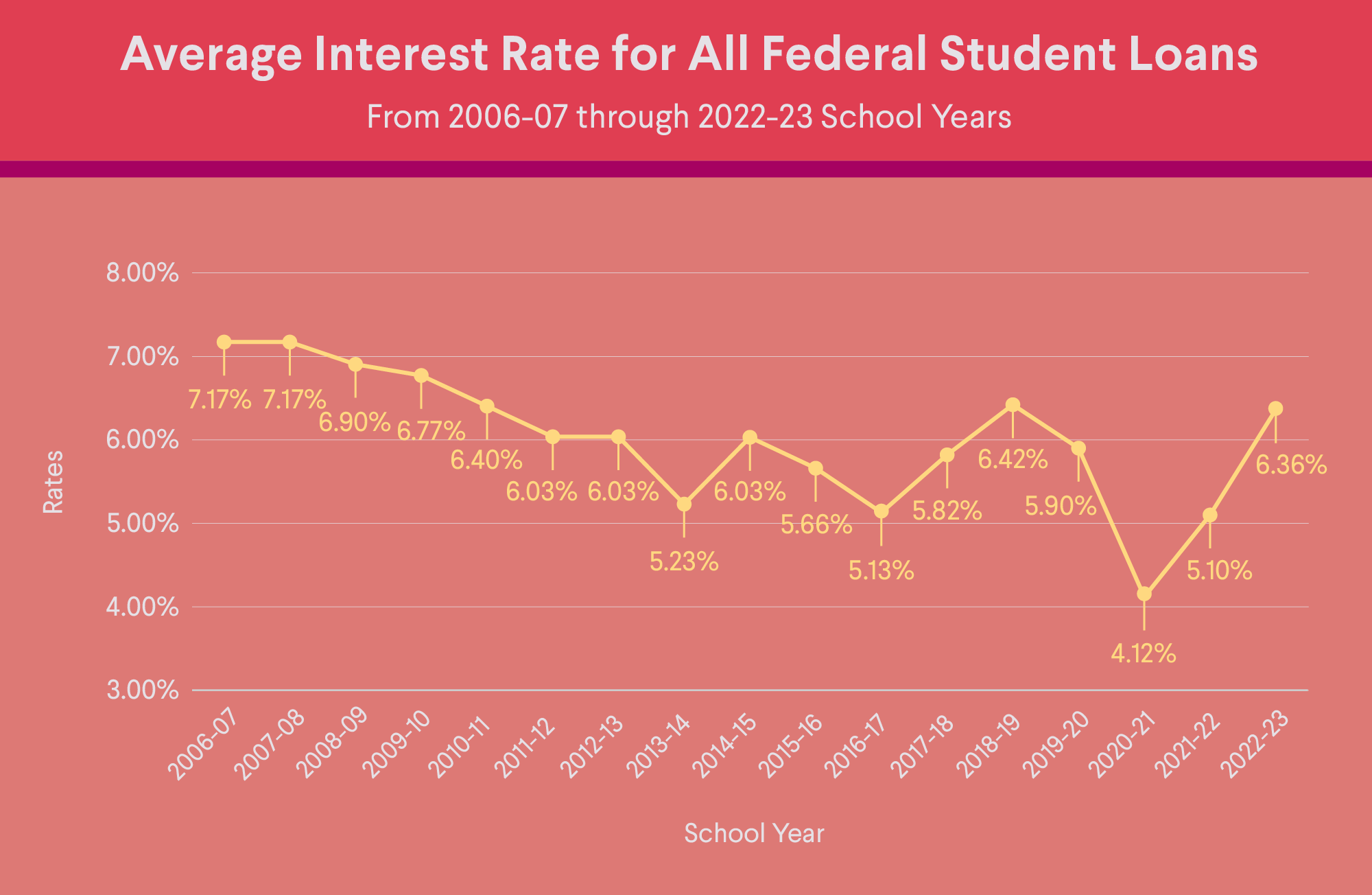Can a Parent PLUS Loan Be Transferred to a Student?
If you’ve taken out a Parent PLUS loan to help your child through college, you may be wondering if it’s possible to transfer the loan into your child’s name now that they have an income. While there are no federal loan programs that allow for this, there are other options that allow your child to take over the debt.
Table of Contents
How to Transfer a Parent PLUS Loan to a Student
In order to transfer a Parent PLUS loan to a child or student, the student can apply for student loan refinancing through a private lender. With a student loan refinance, the child takes out a refinanced student loan and uses it to pay off the Parent PLUS loan. The student is then responsible for making the monthly payments and paying off the loan.
To get a student loan refinance and use the funds to pay off a Parent PLUS loan, simply have your child fill out a student loan refinancing application. Make sure to include the Parent PLUS loan information in the application.
If approved, the student can pay off the Parent PLUS loan with their new loan and begin making payments on the new loan.
Key Points
• Transferring a Parent PLUS loan to a student involves refinancing through a private lender.
• The student must apply for a new loan to pay off the Parent PLUS loan.
• Once refinanced, the student becomes responsible for the new loan’s repayments.
• Refinancing can potentially lower the interest rate and monthly payments.
• The process is irreversible, making the student solely responsible for the debt.
Advantages of Refinancing a Parent PLUS Loan
The main advantage of refinancing a Parent PLUS loan is to get the loan out of the parent’s name and into the student’s. However, there are other potential advantages to refinancing student loans, including:
• Lowering your interest rate
• Reducing your monthly payments
• Paying off your loan quicker
• Allowing the student to build a credit history
💡 Quick Tip: Ready to refinance your student loan? With SoFi’s no-fee loans, you could save thousands.
Disadvantages of Refinancing a Parent PLUS Loan
While it may be beneficial to get the loan out of the parent’s name and into the student’s, there are some disadvantages that should be considered, such as:
• Losing federal student loan benefits, including income-driven repayment, deferment options, and Public Service Loan Forgiveness
• Possibly getting a higher interest rate, especially if the student has poor credit
• The student is now responsible for the monthly payment, which might become a hardship if their income is low
If you do choose to refinance your Parent PLUS loan by means of a student loan refinance, you should note that this process is not reversible. Once your child signs on the dotted line and pays off the Parent PLUS loan, the debt is now theirs.
Parent PLUS Loan Overview
The Department of Education provides Parent PLUS loans that can be taken out by a parent to fund their child’s education. Before applying, the student and parent must fill out the Free Application for Federal Student Aid (FAFSA®). Then the parent can apply directly for a Parent PLUS loan, also known as a Direct PLUS Loan.
The purpose of a Parent PLUS loan is to fund the education of the borrower’s child. The loan is made in the parent’s name, and the parent is ultimately responsible for repaying the loan. Parent PLUS loans come with higher interest rates and origination fees than federal student loans made to students. Further, these loans are not subsidized, which means interest accrues on the principal balance from day one of fund disbursement.
Parents are eligible to take out a maximum of the cost of attendance for their child’s school, minus any financial aid the student is receiving. Payments are due immediately from the time the loan is disbursed, unless you request a deferment to delay payment. You can also opt to make interest-only payments on the loan until your child has graduated.
💡 Quick Tip: Federal parent PLUS loans might be a good candidate for refinancing to a lower rate.
Pros and Cons of Parent PLUS Loans
Parent PLUS loans allow you to help your child attend college without their accruing debt.
Pros of Parent PLUS loans include:
You can pay for college in its entirety. Parent PLUS loans can cover the full cost of attendance, including tuition, books, room and board, and other fees. Any money left over after expenses is paid to you, unless you request the funds be given directly to your child.
Multiple repayment plans available. As a parent borrower, you can choose from three types of repayment plans: standard, graduated, or extended. With all three, interest will start accruing immediately.
Interest rates are fixed. Interest rates on Parent PLUS loans are fixed for the life of the loan. This allows you to plan your budget and monthly expenses around this additional debt.
They are relatively easy to get. To qualify for a Parent PLUS loan, you must be the biological or adoptive parent of the child, meet the general requirements for receiving financial aid, and not have an adverse credit history. If you do have an adverse credit history, you may still be able to qualify by applying with an endorser or proving that you have extenuating circumstances, as well as undergoing credit counseling. Your debt-to-income ratio and credit score are not factored into approval.
Cons of Parent PLUS loans include:
Large borrowing amounts. Because there isn’t a limit on the amount that can be borrowed as long as it doesn’t exceed college attendance costs, it can be easy to take on significant amounts of debt.
Interest accrues immediately. You may be able to defer payments until after your child has graduated, but interest starts accruing from the moment you take out the loan. Subsidized loans, which are available to students with financial need, do not accrue interest until the first loan payment is due.
Can a Child Make the Parent PLUS Loan Payments?
Yes, your child can make the monthly payments on your Parent PLUS loan. If you want to avoid having your child apply for student loan refinance, you can simply have them make the Parent PLUS loan payment each month. However, it’s important to note that the loan will still be in your name. If your child misses a payment, it will affect your credit score, not theirs. Your child also will not be building their own credit history since the debt is not in their name.
Parent PLUS Loan Refinancing
As a parent, you may also be interested in refinancing your Parent PLUS loan. Refinancing results in the Parent PLUS loan being transferred to another lender. By transferring your loan, you may be able to qualify for a lower interest rate. Securing a lower interest rate allows you to pay less interest over the life of the loan — and if you also shorten your loan term, you can pay off the loan more quickly.
When you refinance Parent PLUS loans, you do lose borrower protections provided by the federal government. These include income-driven repayment plans, forbearance, deferment, and federal loan forgiveness programs. If you are currently taking advantage of one of these opportunities, it may not be in your best interest to refinance.
At SoFi, you can refinance federal Parent PLUS loans and qualified private student loans into one new loan with one convenient payment. You can do this on your own and keep the Parent PLUS loan in your name, or you can have your child apply for student loan refinancing and use that money to pay off your Parent PLUS loan. With SoFi, there are no application fees, no origination fees, and no prepayment fees.
Looking to lower your monthly student loan payment? Refinancing may be one way to do it — by extending your loan term, getting a lower interest rate than what you currently have, or both. (Please note that refinancing federal loans makes them ineligible for federal forgiveness and protections. Also, lengthening your loan term may mean paying more in interest over the life of the loan.) SoFi student loan refinancing offers flexible terms that fit your budget.
FAQ
What if I can’t pay my Parent PLUS loans?
If you are struggling to pay your Parent PLUS loan, we recommend getting in touch with your lender and asking for a deferment or forbearance to temporarily suspend your payments. Keep in mind, though, that interest will continue to accrue on your loan even if payments are postponed. You could also consider switching the repayment plan you are enrolled in to an extended repayment plan, or refinancing your loan in order to get a lower interest rate. If you’re able to consolidate your Parent PLUS loan with a federal Direct Consolidation loan, you can also make it eligible for the Income-Contingent Repayment plan. This plan adjusts your monthly payment to 20% of your discretionary income while extending your repayment terms to 25 years.
Can you refinance a Parent PLUS loan?
Yes, it is possible to refinance a Parent PLUS loan through a private lender. Doing so will make the loan ineligible for any federal borrower protections, but it might allow you to secure a more competitive interest rate or have the refinanced loan taken out in your child’s name instead of your own.
Is there loan forgiveness for parents PLUS loans?
It is possible to pursue Public Service Loan Forgiveness (PSLF) with a Parent PLUS loan. To do so, the loan will first need to be consolidated into a Direct Consolidation loan and then enrolled in an income-driven repayment plan. Then, you’ll have to meet the requirements for PSLF, including 120 qualifying payments while working for an eligible employer (such as a qualifying not-for-profit or government organization). Note that eligibility for PSLF depends on your job as the parent borrower, not your child’s job.
SoFi Loan Products
SoFi loans are originated by SoFi Bank, N.A., NMLS #696891 (Member FDIC). For additional product-specific legal and licensing information, see SoFi.com/legal. Equal Housing Lender.
SoFi Student Loan Refinance
If you are a federal student loan borrower, you should consider all of your repayment opportunities including the opportunity to refinance your student loan debt at a lower APR or to extend your term to achieve a lower monthly payment. Please note that once you refinance federal student loans you will no longer be eligible for current or future flexible payment options available to federal loan borrowers, including but not limited to income-based repayment plans or extended repayment plans.
Checking Your Rates: To check the rates and terms you may qualify for, SoFi conducts a soft credit pull that will not affect your credit score. However, if you choose a product and continue your application, we will request your full credit report from one or more consumer reporting agencies, which is considered a hard credit pull and may affect your credit.
External Websites: The information and analysis provided through hyperlinks to third-party websites, while believed to be accurate, cannot be guaranteed by SoFi. Links are provided for informational purposes and should not be viewed as an endorsement.
Third-Party Brand Mentions: No brands, products, or companies mentioned are affiliated with SoFi, nor do they endorse or sponsor this article. Third-party trademarks referenced herein are property of their respective owners.
Financial Tips & Strategies: The tips provided on this website are of a general nature and do not take into account your specific objectives, financial situation, and needs. You should always consider their appropriateness given your own circumstances.
SOSL0823013 Read more







